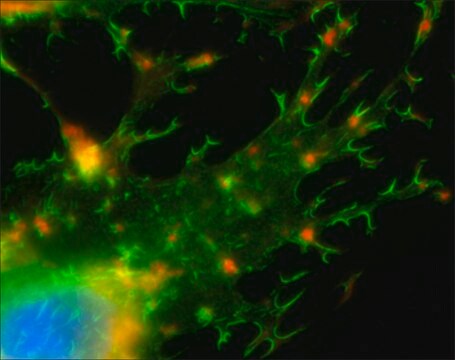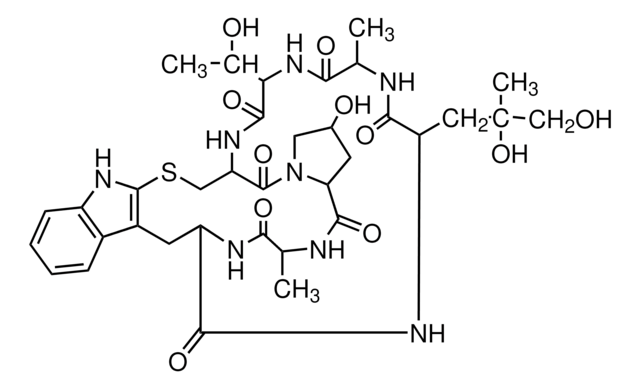P5282
Phalloidin Peptide
≥90% (HPLC), solid, FITC labeled
Synonym(s):
Phalloidin-FITC
About This Item
Recommended Products
product name
Phalloidin, Fluorescein Isothiocyanate Labeled, sequence Amanita phalloides(synthetic: peptide sequence)
biological source
sequence from Amanita phalloides (synthetic: peptide sequence)
Quality Level
form
solid
fluorescence
λex 495 nm; λem 520 nm(lit.)
storage temp.
−20°C
General description
Application
- To visualize F-Actin reorganization in primary neonatal cardiomyocytes (PNCMs) and H9C2 cells (rat cardiac myoblasts) following endothelin-1 (ET-1) and angiotensin II (Ang II) treatment.
- In immunochemistry to label microfilament.
- In immunofluorescence analysis to stain F-actin.
Biochem/physiol Actions
Signal Word
Danger
Hazard Statements
Precautionary Statements
Hazard Classifications
Acute Tox. 2 Dermal - Acute Tox. 2 Inhalation - Acute Tox. 2 Oral
Storage Class Code
6.1A - Combustible acute toxic Cat. 1 and 2 / very toxic hazardous materials
WGK
WGK 3
Flash Point(F)
Not applicable
Flash Point(C)
Not applicable
Certificates of Analysis (COA)
Search for Certificates of Analysis (COA) by entering the products Lot/Batch Number. Lot and Batch Numbers can be found on a product’s label following the words ‘Lot’ or ‘Batch’.
Already Own This Product?
Find documentation for the products that you have recently purchased in the Document Library.
Customers Also Viewed
Articles
In the midst of beeping lab timers, presentations and grant deadlines, it is easy to take for granted the quality of lab reagents.
Related Content
Three-dimensional (3D) printing of biological tissue is rapidly becoming an integral part of tissue engineering.
Our team of scientists has experience in all areas of research including Life Science, Material Science, Chemical Synthesis, Chromatography, Analytical and many others.
Contact Technical Service





